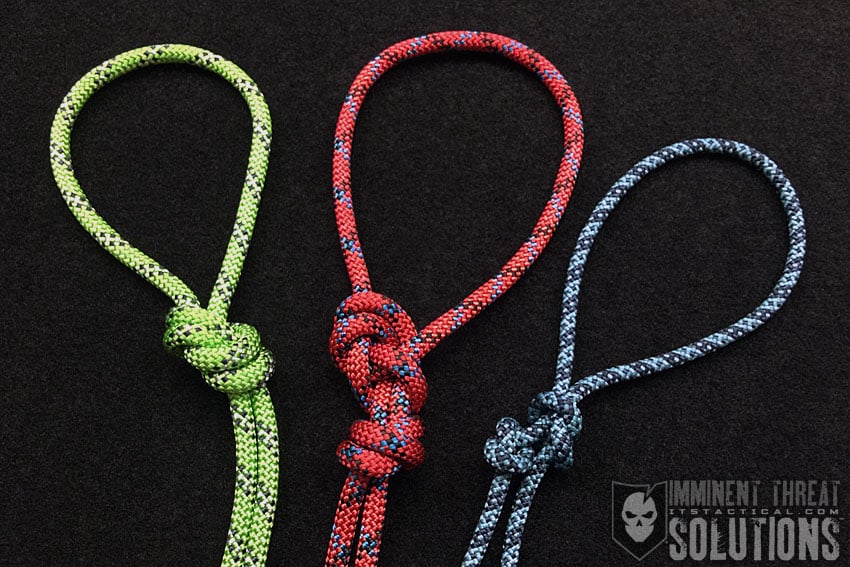

Having concluded with bends in our video last week, our Knot of the Week in HD continues today with the start of loops. I’ll be going over a few basic loops, like the Overhand Loop and Stopped Loop, before covering the “king of the knots;” the Bowline. Despite it being written as one word, I pronounce it as two and catch a lot of grief for the way I say it.
There’s certainly no right or wrong way to say bowline, but my pronunciation does draw from the origin on the knot’s usage in modern sailing. In tying down the edge of a sail on a ship, it’s tied towards the bow of the ship and into the wind, hence bow-line.
(Strength: 3/Security: 5/Stability: 5/Difficulty: 2) See below for what these ratings mean.
The Overhand Loop is a very basic and easy to tie loop, yet fairly strong when compared to others like the Stopped Loop below. I use this fixed loop for a quick option when tying down cargo, or I need a quick attachment point. It’s important to note that Ashley references in his Book of Knots that the Figure-Eight Loop is “perhaps stronger than the Loop Knot (Overhand Loop.) Neither of these knots is used at sea, as they are hard to untie.” (The Ashley Book of Knots, p.190, #1047, brackets added)
An Overhand Knot can also be tied in the middle of a line, provided it isn’t under load already.
(Strength: 2/Security: 4/Stability: 4/Difficulty: 4) See below for what these ratings mean.
A Stopped Loop isn’t as strong or secure as the Overhand Loop and it’s purpose for being here is really as a warning to choose something better than the Stopped Loop if you need to create a fixed loop in a line. It goes without saying that this doesn’t really have a place in climbing and should be avoided in this context, as well as many others.
(Strength: 2/Security: 2/Stability: 4/Difficulty: 4) See below for what these ratings mean.
Often called “the king of the knots,” the Bowline is the knot you should know if you only know one. It’s versatility is unmatched and can be used in everything from tying down a tarp to rescue situations. The Bowline produces a fixed loop that won’d close, slip or bind around an object (or person.) It’s also great for mooring a small craft and many other nautical purposes. Just like the Overhand Loop, the Bowline can’t be tied or untied when under load, as the line can’t be pulled into the loop if tension isn’t able to be released.
When adding a backup to the Bowline, the ratings above change for the better in my opinion and you can never go wrong with backing up knots, especially when using them for climbing purposes. In the video above, I address backing the Bowline up with a Double Overhand Knot and a Yosemite backup. Be careful with the Yosemite backup, if you tie the Yosemite before the Bowline is tightened, it could wind up producing a slip knot.
Strength/Security/Stability/Difficulty
Each knot will be assigned a rating from 1-5 (1 representing the lowest score) based on the following four properties:
Strength – All knots will weaken the strength of a rope, however, there are knots that are stronger than others. The scale here will reflect how strong the rope remains with the specified knot.
Security – The security scale refers to how well the knot will stay tied, and resist coming loose under a normal load.
Stability – Stability refers to how easily the knot will come untied under an abnormal load (i.e. the knot being pulled in a direction it was not intended to) A lower score here represents instability.
Difficulty – The lower the number, the easier a knot is to tie.

Do you enjoy witty banter and nostalgic geekdom all while sipping on a fine aged scotch? Then you’ll love our podcast!

Shop the ITS Store for exclusive merchandise, equipment and hard to find tactical gear.

Discussion